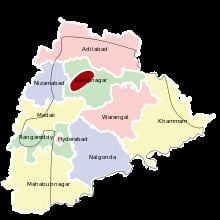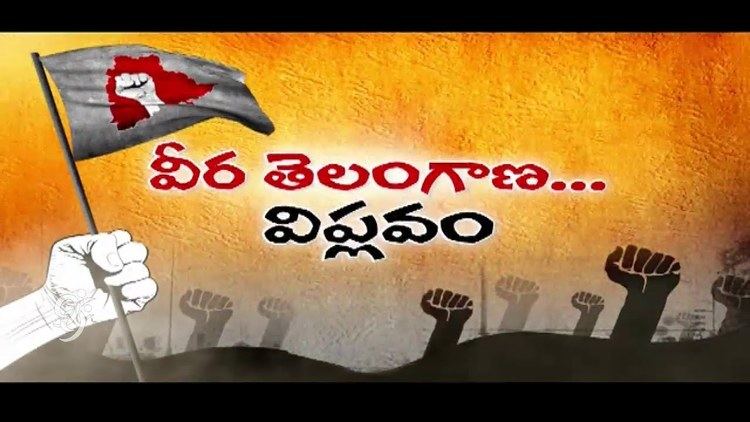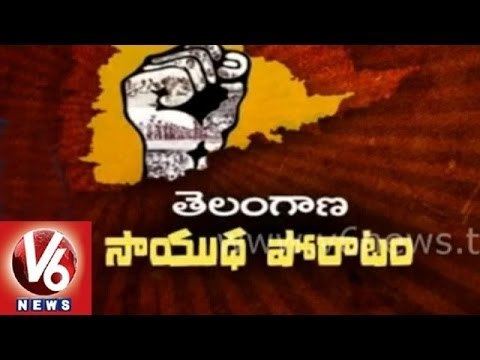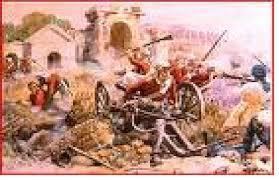Period 1946 – 1951 | ||
 | ||
Similar Indian annexation of Hydera, Peasants' Revolt, Siege of Golconda, Punnapra‑Vayalar uprising, Naxalite–Maoist insurgency | ||
Telangana armed struggle telangana rebellion september 16 v6 news
The Telangana Rebellion (IAST: tělaṃgāṇā věţţi cākiri udyamaṃ, "Telangana Bonded Labour Movement"; alternatively, tělaṃgāṇā raitāṃga sāyudha pōrāţaṃ, "Telangana Peasants Armed Struggle") was a peasant rebellion against the feudal lords of the Telangana region and, later, the princely state of Hyderabad, between 1946 and 1951.
Contents
- Telangana armed struggle telangana rebellion september 16 v6 news
- Telangana rebellion telangana raithanga sayudha poratam big story 11 09 2014 99tv
- Communist involvement
- Events
- Nizams resistance to join India
- Annexation of Hyderabad State
- Land reform
- In popular culture
- References

Telangana rebellion telangana raithanga sayudha poratam big story 11 09 2014 99tv
Communist involvement

The communists were as surprised as everyone else to see their efforts culminate in a series of successful attempts at organising the rebellion and distribution of land. With the Nizam holding on, even after the proclamation of Indian independence, the communists stepped up their campaign, stating that the flag of the Indian union was also the flag of the people of Hyderabad, much against the wishes of the ruling Asaf Jah dynasty.
Events

The revolt started in 1946 against the oppressive feudal lords and quickly spread to the Warangal and Bidar districts in around 4000 villages. Peasant farmers and labourers revolted against local feudal landlords (jagirdars and deshmukhs), who were ruling the villages known as samsthans. These samsthans were ruled mostly by Reddys and Velama, known as doralu.
They ruled over the communities in the village and managed the tax collections (revenues) and owned almost all the land in that area. The Nizam had little control over these regions except the capital, Hyderabad. Chakali Ilamma, belonging to the Rajaka caste, had revolted against 'zamindar' Ramachandra Reddy, during the struggle when he tried to take her 4 acres of land. Her revolt inspired many to join the movement.
The agitation led by communists was successful in taking over 3000 villages from the feudal lords and 10,00,000 acres of agriculture land was distributed to landless peasants. Around 4000 peasants lost their lives in the struggle fighting feudal private armies.
It later became a fight against Nizam Osman Ali Khan, Asif Jah VII. The initial modest aims were to do away with the illegal and excessive exploitation meted out by these feudal lords in the name of bonded labour. The most strident demand was for the writing off of all debts of the peasants that were manipulated by the feudal lords.
Nizam's resistance to join India
With Hyderabad's administration failing after 1945, the Nizam succumbed to the pressure of the Muslim elite and started the Razzakar Movement. At the same, time the Nizam was resisting the Indian government's efforts to bring the Hyderabad state into the Indian Union. The government sent the army in September 1948 to annex the Hyderabad state into Indian Union. The Communist party had already instigated the peasants to use guerrilla tactics against the Razzakars and around 3000 villages (about 41000 km2) had come under peasant rule. The landlords were either killed or driven out and the land was redistributed. These victorious villages established communes reminiscent of Soviet mirs to administer their region. These community governments were integrated regionally into a central organization. The rebellion was led by the Communist Party of India under the banner of Andhra Mahasabha.
Among the well-known individuals at the forefront of the movement were Ravi Narayana Reddy, Maddikayala Omkar, Maddikayala Lakshmi Omkar, Puchalapalli Sundarayya, Pillaipalli Papireddy, Suddala Hanmanthu, Chandra Rajeswara Rao, Bommagani Dharma Bhiksham, Makhdoom Mohiuddin, Sulaiman Areeb, Hassan Nasir, Manthrala Adi Reddy, Bhimreddy Narasimha Reddy,Nandyala Srinivas Reddy, Mallu Venkata Narasimha Reddy, Mallu Swarajyam, Lankala Raghava Reddy, Kukudal Jangareddy, Aruthla Ramchandra Reddy, Krishna Murthy, Aruthula Kamaladevi and Bikumalla Sathyam.
The violent phase of the movement ended in 1951, when the last guerilla squads were subdued in the Telangana region.
Annexation of Hyderabad State
The rebellion and the subsequent police action led to the capture of Hyderabad state from the Nizam's rule on 17 September 1948 and after a temporary military administration the dominion was eventually merged into the Indian Union. In the process tens of thousands of people lost their lives, the majority that died during army's movement were Muslims while a much larger number of people were killed by the Asaf Jahi rulers and the nobles of Telangana in the pre-occupation struggle. The Communist Party of India, although weak today, still retains strong support in the grassroots of Telangana. Puchchalapalli Sundaraiah went on to become the first leader of opposition in independent India.
The last Nizam Asaf Jah VII was made the Rajpramukh of the Hyderabad State from 26 January 1950 to 31 October 1956. The 1952 elections led to the victory of the Congress party in Hyderabad state. Burgula Ramakrishna Rao was first Chief Minister of the Hyderabad state from 1952 to 1956. In 1956, Hyderabad State was merged with Andhra State to form Andhra Pradesh. It was again separated from Andhra Pradesh to establish the State of Telangana in 2014.
Land reform
The revolt ensured the victory of the Communist Party in Andhra Pradesh in the 1952 elections. Land reforms were recognised as important and various acts were passed to implement them.
